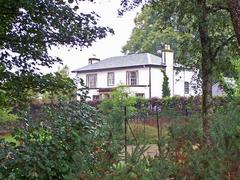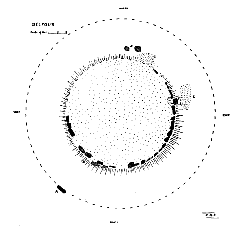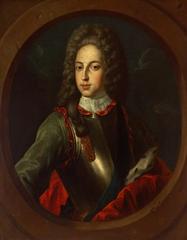Statue of Flora MacDonald, Inverness: Visiting Hours, Tickets, and Travel Guide
Date: 14/06/2025
Introduction
Overlooking the picturesque River Ness and standing sentinel on Castle Hill, the Flora MacDonald statue in Inverness pays tribute to one of Scotland’s most revered heroines. Renowned for her pivotal role in the aftermath of the 1746 Battle of Culloden, Flora MacDonald’s courageous actions have become emblematic of Scottish resilience, loyalty, and Highland identity. Erected in the late 19th century by sculptor Andrew Davidson, the statue not only immortalizes her bravery but also serves as a powerful symbol of the tumultuous Jacobite era. This guide delivers a detailed overview of the statue’s history, cultural significance, and practical information to ensure a rewarding visit.
Whether you are a history enthusiast, cultural traveler, or casual visitor, learning about the woman behind this iconic monument will deepen your appreciation of the site. This resource covers Flora MacDonald’s life, the Jacobite legacy, the statue’s artistry, visitor details, accessibility, guided tours, nearby attractions, and frequently asked questions. For further exploration, refer to official resources such as the Inverness Castle Experience, Jacobite Scotland, and the West Highland Museum.
Table of Contents
- Introduction
- Historical Background of Flora MacDonald
- The Jacobite Rising and Flora’s Heroic Deed
- Later Life and Enduring Legacy
- The Flora MacDonald Statue: Artistic Design and Symbolism
- Visiting the Statue: Hours, Tickets, and Accessibility
- Getting There and Nearby Attractions
- Restoration and Modern Relevance
- Cultural Impact and Commemoration
- Visitor Experience: Interpretation and Practical Tips
- Frequently Asked Questions (FAQ)
- Conclusion and Final Tips
- References and Official Sources
Historical Background of Flora MacDonald
Flora MacDonald (1722–1790) was born in South Uist, Outer Hebrides, into a minor gentry family. Raised in a Protestant household within a region steeped in Catholic and Gaelic traditions, she grew up under the guardianship of Sir Alexander MacDonald of Sleat, who instilled in her a deep sense of compassion and moral duty (West Highland Museum).
Though her family supported the Hanoverian government during the Jacobite risings, Flora’s own legacy would become inseparably linked to the romanticized narrative of the Stuart cause (Wikipedia).
The Jacobite Rising and Flora’s Heroic Deed
After the Jacobite defeat at Culloden in April 1746 (BBC News), Prince Charles Edward Stuart—Bonnie Prince Charlie—became a fugitive. Flora MacDonald, residing on Benbecula, risked her life to help the prince escape government pursuit. Disguising him as her Irish maid “Betty Burke,” she facilitated his journey to the Isle of Skye, an act that inspired the famous “Skye Boat Song” (Newshub). Her motivations were rooted not in politics, but in compassion and a sense of duty (West Highland Museum). Despite her family’s government ties, Flora was arrested, held in the Tower of London, and released the following year under a general amnesty (Wikipedia).
Later Life and Enduring Legacy
Flora MacDonald later married Allan MacDonald and emigrated to North Carolina in 1773. Loyalists during the American Revolution, the couple lost their American estate and returned to Scotland, where Flora lived out her final years. Her death in 1790 marked the end of a remarkable life, but her legend grew, especially in the Victorian era, as a symbol of Scottish virtue and resilience (Wikipedia).
The Flora MacDonald Statue: Artistic Design and Symbolism
Artistic Design and Materials
Unveiled in 1889 and crafted by Inverness-born sculptor Andrew Davidson, the statue stands prominently in front of Inverness Castle (Inverness Courier). Cast in bronze, the statue is mounted on a granite plinth and features Flora MacDonald gazing westward toward Skye, symbolizing the island’s significance in her legendary act.
Sculptural Composition and Detailing
Davidson’s work is notable for its lifelike rendering and attention to period detail. Flora is depicted in 18th-century Highland dress—skirt, shawl, and bonnet—evoking both historical authenticity and the grace for which she is remembered. At her feet sits her loyal collie, Flossie, a symbol of steadfastness and fidelity (Evendo). Her posture, with one hand resting on her skirt and the other holding a bundle, reflects both determination and humanity.
Symbolism and Inscription
The plinth bears the inscription:
“Her name will be mentioned in history and if courage and fidelity be virtues, mentioned with honour.”
This homage, echoing Dr. Samuel Johnson’s words after his meeting with Flora, encapsulates her enduring place in Scottish memory (Victorian Web).
Visiting the Statue: Hours, Tickets, and Accessibility
Opening Hours and Admission
- Statue: The Flora MacDonald statue is outdoors and accessible to the public 24 hours a day, year-round (Jacobite Scotland). There is no entry fee or ticket required.
- Inverness Castle Experience: Admission to the castle’s interior and viewpoints requires a ticket (£10 for adults; discounts for children, seniors, and families) (Explorial).
Accessibility
The statue is accessible via paved paths, though Castle Hill is on a gradient and may require extra care for wheelchair users or those with limited mobility. Contact the Inverness Castle Experience for detailed accessibility information.
Getting There and Nearby Attractions
Directions
- By Public Transport: Inverness is served by frequent bus and train connections. From the city’s transport hubs, it is a 10–15-minute walk to Castle Hill (Evendo).
- By Car: Central parking is available near the castle (fees apply).
- On Foot: The statue is easily reached from city center hotels and other attractions.
Nearby Attractions
- Inverness Castle: Home to the Inverness Castle Experience and panoramic city views.
- Inverness Museum and Art Gallery: Showcases Highland history and culture.
- Culloden Battlefield: The site of the decisive 1746 battle.
- River Ness Walks: Scenic riverside trails perfect for photography and relaxation.
Restoration and Modern Relevance
The statue underwent significant restoration in 2025 as part of a £36 million redevelopment of Inverness Castle (Newshub). The project included cleaning, protective coatings, and community engagement initiatives, such as involving local children in naming the statue’s dog, Flossie (BBC News). These efforts ensure the monument remains a vibrant part of the city’s heritage.
Cultural Impact and Commemoration
Flora MacDonald’s story is celebrated in the “Skye Boat Song,” highland dances like “Flora MacDonald’s Fancy,” and international commemorations—including the Flora MacDonald Academy in North Carolina (Women Rock Statues). The statue highlights women’s vital roles in history, challenging traditional narratives and inspiring new generations.
Visitor Experience: Interpretation and Practical Tips
Interpretation and Signage
Interpretive plaques at the site provide historical context, including quotations in English and Gaelic. For deeper insights, join a city walking tour or use the GPSmyCity app for self-guided exploration.
Amenities
- Restrooms: Available in nearby public facilities and within the castle grounds.
- Cafés and Shops: Numerous options are located within a short walk.
- Family Features: The area is open and suitable for families; educational features are being enhanced as part of the castle redevelopment.
Photography
For the best photos, visit at sunrise or sunset, capturing the statue with Inverness Castle and the River Ness in the background. Drone photography is permitted with restrictions (Canmore).
Frequently Asked Questions (FAQ)
Q: What are the visiting hours for the Flora MacDonald statue?
A: The statue is accessible 24/7, year-round, as it is located in a public outdoor space.
Q: Is there an admission fee?
A: No, visiting the statue is free.
Q: Are guided tours available?
A: Many Inverness walking tours include the statue; self-guided tour apps are also available.
Q: Is the site accessible for visitors with mobility issues?
A: The area is paved and generally accessible, but some paths are steep.
Q: What other attractions are nearby?
A: Inverness Castle, the museum and art gallery, Culloden Battlefield, and River Ness walks are among the highlights.
Q: Are there facilities nearby?
A: Public restrooms, shops, and cafés are all within walking distance.
Conclusion and Final Tips
The Flora MacDonald statue is more than a work of art—it is a living testament to a pivotal chapter in Scottish history and an enduring symbol of courage and fidelity. Freely accessible and surrounded by some of Inverness’s most important sites, the statue provides a compelling focal point for understanding Scottish heritage.
For a richer experience, pair your visit with guided tours, museum visits, or digital storytelling through apps like Audiala. Check local event calendars for heritage festivals or special exhibitions, and remember to dress for changing Highland weather.
References and Official Sources
- West Highland Museum
- Inverness Courier
- Women Rock Statues
- Jacobite Scotland
- Newshub
- High Life Highland: Inverness Castle Experience
- BBC News
- Kaitlyn Reynolds
- Evendo
- Visitors Guide to Scotland
- Victorian Web
- Explorial
- Canmore
- GPSmyCity


